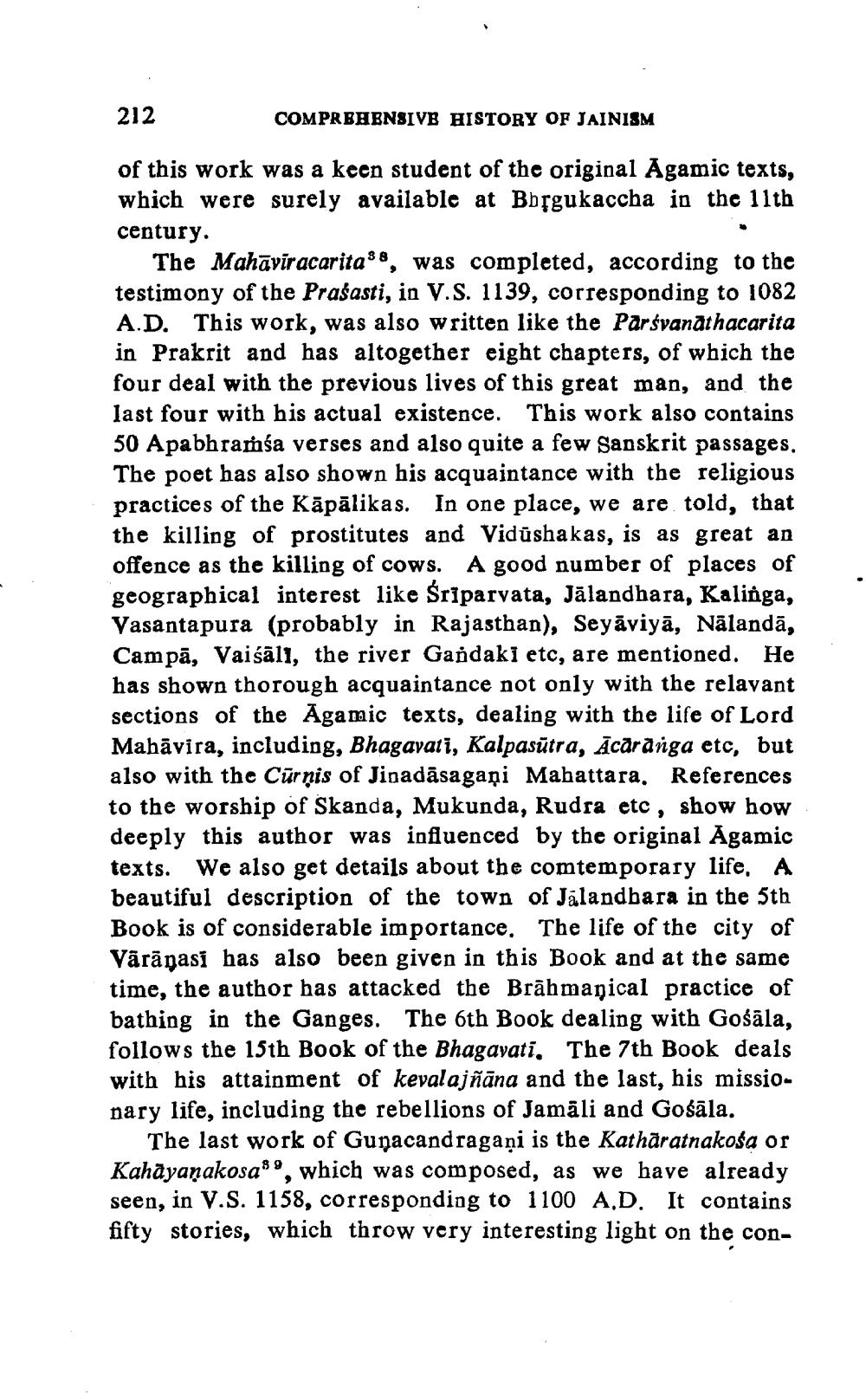________________
212
COMPRBHENSIVE HISTORY OF JAINISM
of this work was a keen student of the original Agamic texts, which were surely available at Burgukaccha in the 11th century.
The Mahāvīracaritas 8, was completed, according to the testimony of the Prasasti, in V.S. 1139, corresponding to 1082 A.D. This work, was also written like the Parsvanathacarita in Prakrit and has altogether eight chapters, of which the four deal with the previous lives of this great man, and the last four with his actual existence. This work also contains 50 Apabhramśa verses and also quite a few Sanskrit passages. The poet has also shown his acquaintance with the religious practices of the Kāpālikas. In one place, we are told, that the killing of prostitutes and Vidūshakas, is as great an offence as the killing of cows. A good number of places of geographical interest like Śriparvata, Jālandhara, Kalinga, Vasantapura (probably in Rajasthan), Seyāviyā, Nālandā, Campā, Vaiśāli, the river Gandaki etc, are mentioned. He has shown thorough acquaintance not only with the relavant sections of the Āgamic texts, dealing with the life of Lord Mabāvira, including, Bhagavati, Kalpasūtra, Ācāranga etc, but also with the Cūrņis of Jinadāsagaņi Mabattara. References to the worship of Skanda, Mukunda, Rudra etc, show how deeply this author was influenced by the original Agamic texts. We also get details about the comtemporary life, A beautiful description of the town of Jalandbara in the 5th Book is of considerable importance. The life of the city of Vārāṇasi has also been given in this Book and at the same time, the author has attacked the Brāhmanical practice of bathing in the Ganges. The 6th Book dealing with Gośāla, follows the 15th Book of the Bhagavati, The 7th Book deals with his attainment of kevalajñāna and the last, his missionary life, including the rebellions of Jamāli and Gośāla.
The last work of Gunacandragani is the Kathāratnakośa or Kahāyaṇakosa® 9, which was composed, as we have already seen, in V.S. 1158, corresponding to 1100 A.D. It contains fifty stories, which throw very interesting light on the con




